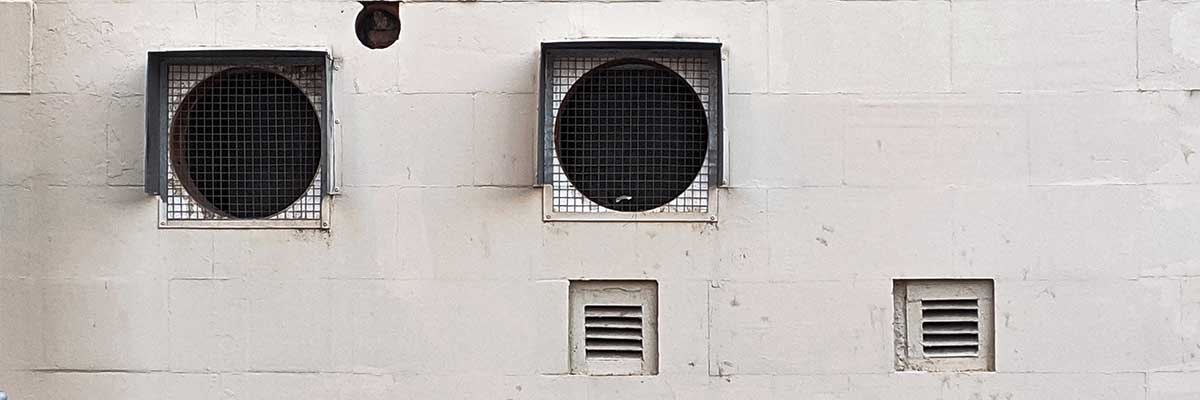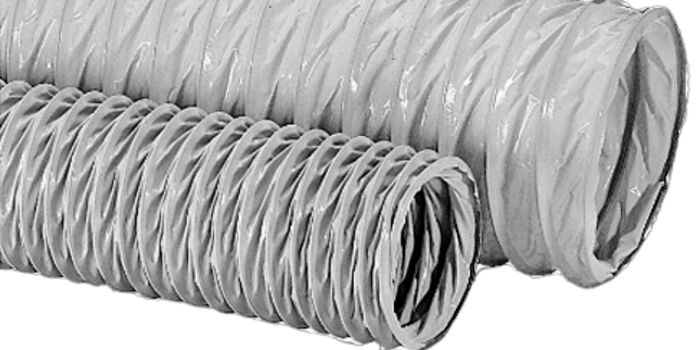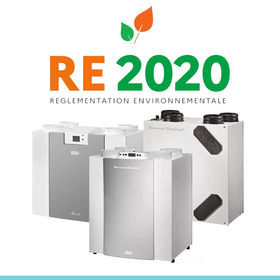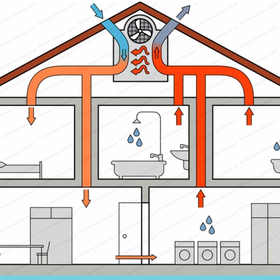Choose between a flexible sheath, semi-rigid or rigid sheath for your ventilation
Do you want to improve the air quality in your home? Remember to choose the right ducts for your ventilation system. Between flexible, semi-rigid and rigid sheaths, it is important to know the advantages and disadvantages of each type to make the best choice. In this article, discover all the information you need to properly select the right ducts for your home.

Flexible PVC or aluminum sheath
Flexible ducts are advantageous because of their affordability . Count from a few tens of euros for non-insulated PVC ducts to a few hundred euros for flexible insulated aluminum networks, for example.
However, they must be installed meticulously to avoid elbows which would cause significant pressure drops and therefore a reduced ventilation flow.
It is recommended not to use flexible ducts longer than 6 m and in multi-storey houses. In addition, flexible ducts are very fragile during installation. They can easily be torn or crushed without the installer or user noticing.

Flexible ducts are delivered in one meter cartons, but once installed the duct can be up to 10m in length.
This is why it is important to stretch the duct properly during installation to have the smoothest possible surface and avoid pressure drops. It is by pulling the sheath in a false ceiling for example that it potentially gets stuck and tears without knowing it.
Semi-rigid HDPE sheath
The use of semi-rigid HDPE ducts has been developed to install double-flow ventilation while being increasingly used for single-flow CMVs.
A HDPE network with its well-sized accessories can cost up to €1,000 for a single-flow VMC and €2,000 for a standard-size double-flow VMC.
Its advantages are many:
- Easy to implement,
- the sealing and fixing of the elements of the network are made using seals and dedicated accessories
- Very high efficiency and durability .
- Resistance
These ducts have a smooth interior surface of food quality which can be treated antistatic and antibacterial, they are also cleanable to preserve the hygiene of the air which transits for a very long time.

Another advantage is that the semi-rigid ducts have a negligible pressure drop in the network. This ensures the desired suction and blowing flow, while avoiding overconsumption of the fan of your single-flow or double-flow central vacuum unit.
The semi-rigid sheath being very robust , it is impossible to tear or crush it which allows a faster and stress-free installation. You can also insulate (rolls, blown wadding, projected wool) over a semi-rigid network, unlike the flexible network. As a result, you can unroll your semi-rigid network without constraint in your attic and then insulate it afterwards.
Lacentrale-eco tip:
Provide a plenum 10 centimeters above the placo in your living room and the various living rooms to easily pull the semi-rigid network and ensure the proper functioning of your single-flow ventilation.
Rigid PVC or Galva sheath
All the manufacturers offer a range of rigid flat or round PVC ductwork to adapt to installation constraints or to offer a more qualitative aeraulic ductwork.
More economical than the semi-rigid HDPE network, the rigid network takes longer to install . In effect, it requires connection accessories (elbows, tees, flat/round transformation parts, etc.) that must be sealed with tape.
Moreover, PVC elements are not neutral, they can release VOCs into the air. This is why it is recommended to use them only on the air extraction network.
The rigid network can also be made in galva as in tertiary buildings, the galva can remain visible and give an industrial building atmosphere in your home.
Frequently asked questions about vmc ducts
Should we insulate the suction ducts?
YES, if your simple flow ventilation unit is installed in an uninsulated attic. Otherwise, you will have condensation which will form with a risk of damaging your machine, completely blocking a suction duct if a siphon is created, or creating mold spots.
NO, if your ventilation unit is installed in the heated area of your home and the networks pass entirely through the heated volume.
How to clean ventilation ducts?
We invite you to discover the article on the cleaning and maintenance of a vmc .
What diameter of ventilation duct?
You find many diameters of VMC pipes. It usually starts at 60mm, 80mm, then 100, 125, 150 and up to 160mm. A living room like the kitchen , where human activity will create odors and humidity, it is advisable to install a minimum diameter of 125 mm .
It is also necessary to take into account the general volume of the targeted area: the larger it is, the more the diameter of the sheaths must increase.
| Network type | Sheath diameter | Use |
|---|---|---|
| Flexible or rigid network for single flow VMC | 80mm | Connect the bathroom, laundry and WC vents to the VMC |
| 125mm | Connect the kitchen outlet to the VMC | |
| 160mm | Connect the VMC to the external terminal on the facade or on the roof | |
| HDPE network for single flow VMC | 90mm | Connect the bathroom, laundry and WC vents to the VMC |
| 90mm | Connect the kitchen outlet to the VMC (2 ducts) | |
| 160 mm flexible insulated or rigid polyethylene foam | Connect the VMC to the external terminal on the facade or on the roof | |
| HDPE network for double flow VMC | 75 or 90mm | Connect the bathroom, laundry and WC vents to the VMC |
| 75 mm (3 ducts) or 90 mm (2 ducts) | Connect the kitchen outlet to the VMC | |
| 125 / 160 / 180 mm (depending on the size of the VMC) rigid in polyethylene foam | Connect the VMC to the outside air intake and exhaust terminals |
When to change your sheaths?
It is a good idea to clean the VMC ducts every 10 years. If they are soft, they cannot be cleaned. It is therefore necessary to check that the ventilation is working properly after this period. To do this, use a device for measuring air flow or pressure drop at the outlets.
If the necessary flow rates are reached , the extraction network can be kept, the supply network in the case of double-flow CMVs can be replaced by a clean network. If the necessary speeds are not reached , it means that the network has deteriorated or that it has been badly dimensioned. Accordingly, review the entire network.
HDPE ducts can be cleaned. Their lifespan is probably well over 30 years . It is not essential to change it unless it has been incorrectly sized.
Why do I have water in the VMC ducts?
This presence of water is created by the temperature difference between the hot air extracted from damp rooms and the cold outside air . This is the phenomenon of condensation insideconducts. It occurs for uninsulated ducts that pass through unheated and poorly insulated spaces.
A large volume of water can accumulate without noticing it, because it is not always possible to visually check the condition of the pipes.
How to avoid condensation in VMC ducts?
If you have access to the network with all the ducts, the solution to eliminate condensation is to insulate all the ducts or to embed the ducts in the insulation as close as possible to the heated volume. This insulation will reduce the thermal "shock", which will limit the creation of humidity.
Do not hesitate to read our various articles on air quality and ventilation . We also recommend that you read " Double flow ventilation in renovation – 12 things to know " on the AQC website.





